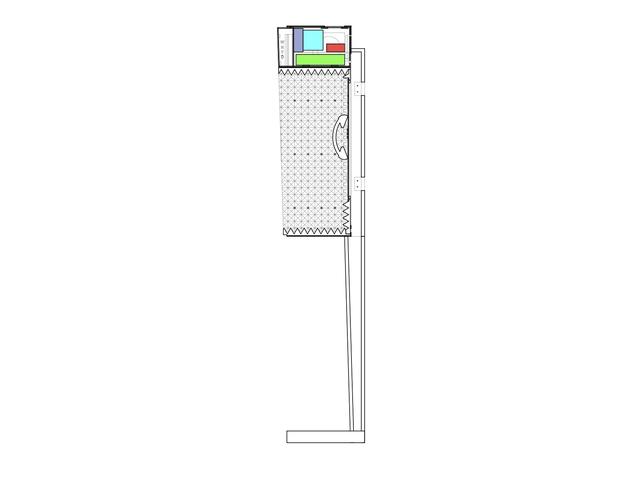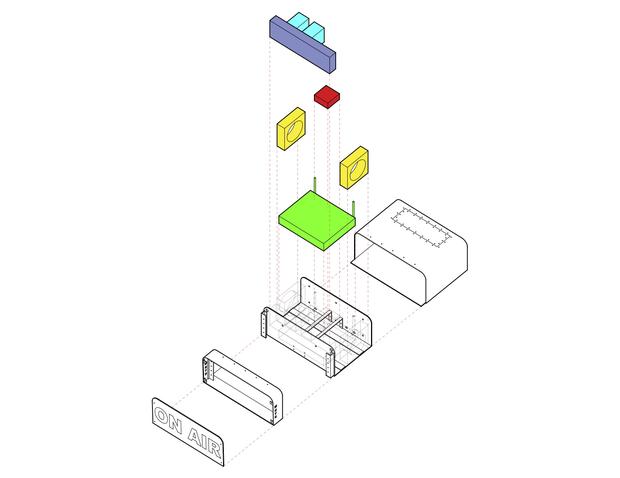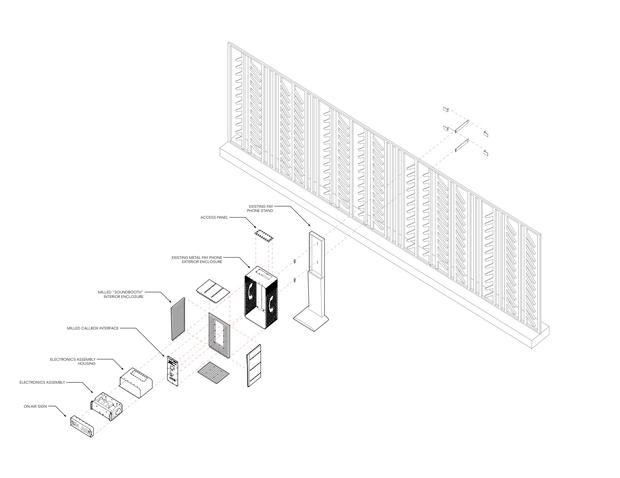How to Make Your Own Talkbox
This brief guide will take you through the broad strokes of what you’ll need and how to get started. Like an instruction manual, but with more fun and less existential dread.
What is Talkbox?
Read our mission statement: Reinventing the pay phone to cultivate trust and participation in underserved neighborhoods and communities, and better WNYC’s journalism in the process.
The Knight Prototype Fund selected our idea for the 2014-2015 cycle of grantees. We've spent the past few months making it, and as of Summer 2015, it will start going out into the community. We wanted to make sure our plans were scalable and open sourced, so we've put together this page to help anyone make one of their own.
But what, actually is it? It's a hacked pay phone that we've built into a field recording device, intended to be moved from location to location. More on this below.
That sounds neat, what do I need to make one?
Ours is made of these things:
1. A factory issue pay phone
2. A power source, connection to voicemail and the Internet, and a way to keep it all cool.
We're using:
- An Obihai OBi200 VoIP phone adapter, to connect to Google Voice
- A mi-fi box to allow to connect to the Internet
- A power source (either some sort of battery or the capacity to plug into another source)
- Mini fans to control temperature
- Two Google Voice accounts to use as voicemail inboxes
3. A design that grabs people
We worked with the phenomenal SHoP Architects to design and fabricate all the things that make our Talkbox look unique - from lighted signage to computer-printed wood paneling designed to mirror the anechoic chamber of a recording booth.
Our final product looks like this:
It’s that simple?
Pretty much, ya. And it only costs about $800. There’s some programming involved with the Obihai - our engineers are working on a white paper about it - but otherwise assembly is easy and flexible. Wanna make it a weird box on the ground? Go for it. A strange humanoid figure whose ear you whisper into? Cool. A phone booth? You know how we feel about that.
Other considerations?
Two things, and they're big ones:
- Create an ethics framework: Because this is intended to cultivate voices from within the community, it's important to be clear about who you are, what you're doing, and how and when you'll use community contributions. When we use Talkbox for a specific reporting project, we plan to ask for names and identification so that we can fact check before we publish any material.
- Wise up on permitting issues: If you intend to install your booth anywhere that is public property, you'll need to understand any civic codes that might apply. In our case, SHoP is helping us navigate permitting issues with New York City owned or operated property.
I have questions, who do I talk to?
You can talk to the project's manager, Lee Hill.
If you have specific fabrication questions, or would like to find out more about SHoP's Fab Lab, contact Elsie Dedecker.



